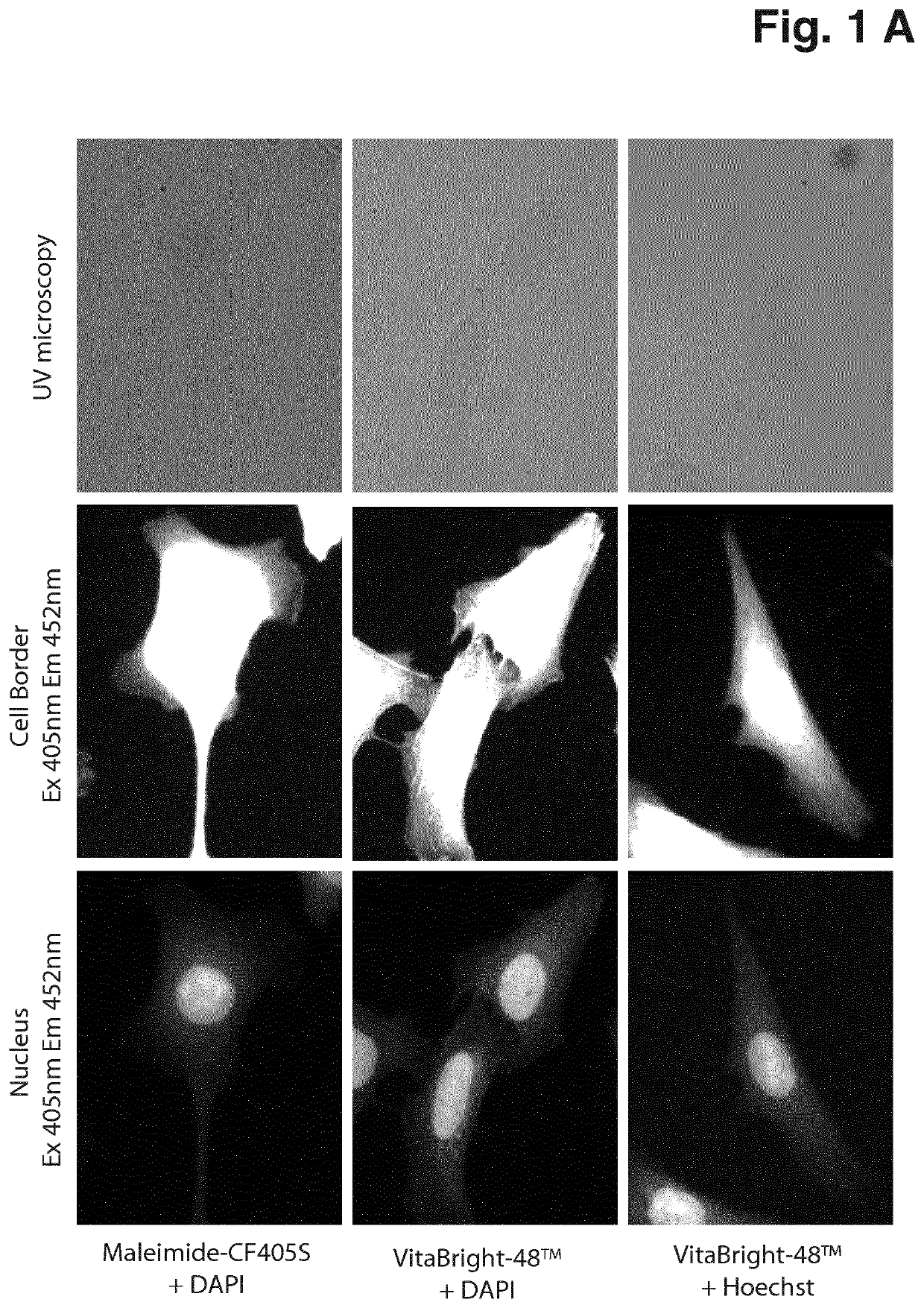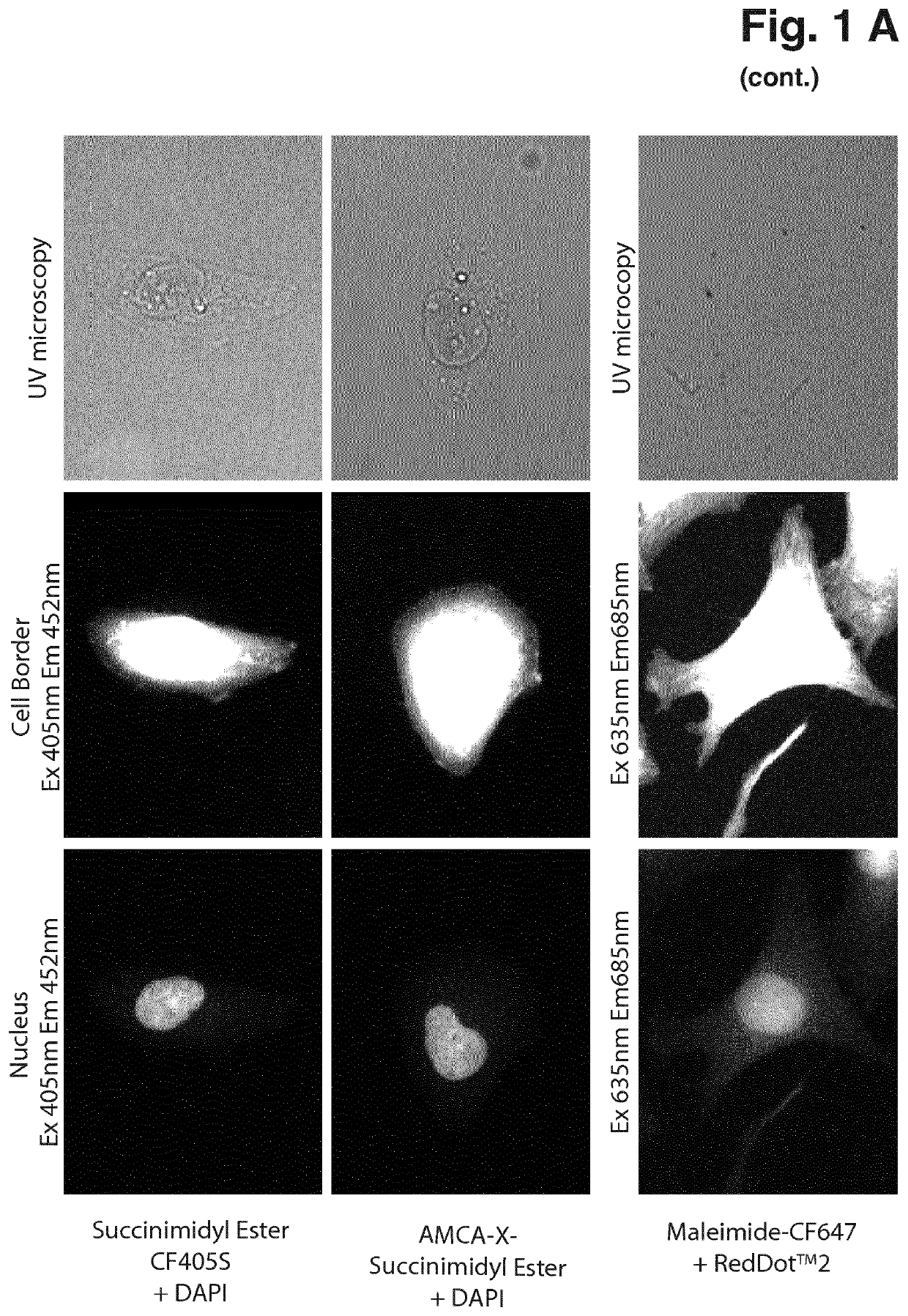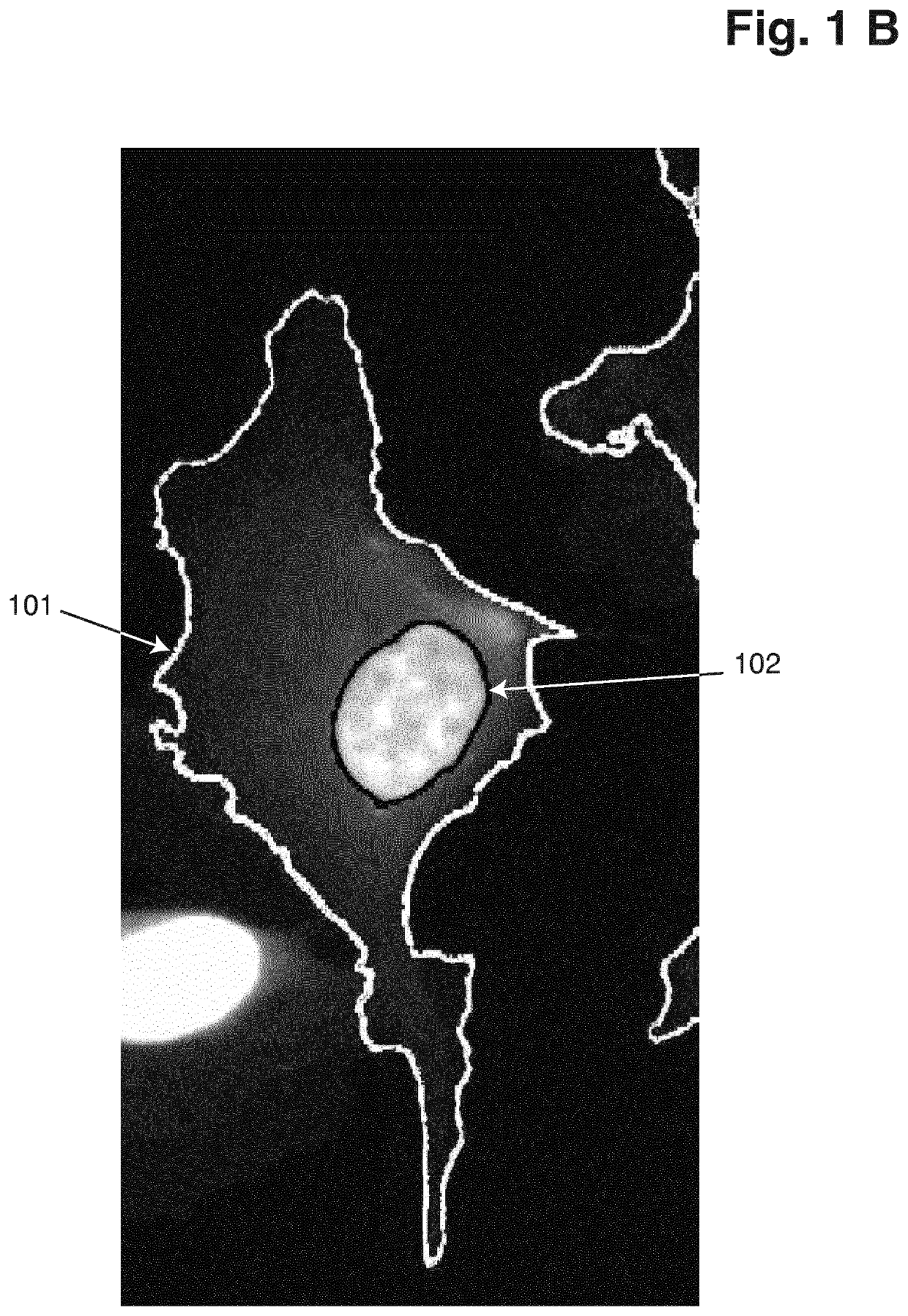Masking of images of biological particles
a technology of biological particles and masks, applied in the field of masking of biological particles, can solve the problems of inadequate performance of tedious processes and limited data output, and achieve the effects of increasing the possible data output of the system, limited data output, and inadequacies
- Summary
- Abstract
- Description
- Claims
- Application Information
AI Technical Summary
Benefits of technology
Problems solved by technology
Method used
Image
Examples
example 1
Single-Excitation Single-Emission Fluorescence Masking of U2OS Cells
[0054]Cells were maintained at 37° C. in a humidified atmosphere with 5% CO2 in RPMI (61870, Gibco®, Thermo Fisher Scientific) supplemented with 8% Heat inactivated Fetal Bovine Serum (10500, Gibco®, Thermo Fisher Scientific). 3.75*105 cells were seeded in Ibidi 12-well slides (81201, Ibidi) or 8-well Millicell EZ slides (PEZGS0816, Merck Millipore) and incubated overnight. The next day the adherent cells were washed in PBS and fixed in 10% neutral buffered formalin (NBF) for 15 minutes at room temperature and permeabilized in 0.1% Triton X-100 in PBS for 10 minutes at room temperature. Subsequently the cells were washed in PBS and counterstained with the following dye combinations: 0.2 μM VitaBright-48™ (Solution 20, ChemoMetec A / S, Denmark, P / N 910-3020) and 1 μg / ml DAPI (Solution 12, ChemoMetec A / S, Denmark, P / N 910-3012); 0.2 μM VitaBright-48™ and 2 μg / ml Hoechst 33342 (Solution 15, ChemoMetec A / S, Denmark, P / N ...
example 2
Single-Excitation Fluorescence Masking of U2OS Cells
[0056]Cells were maintained at 37° C. in a humidified atmosphere with 5% CO2 in RPMI (61870, Gibco®, Thermo Fisher Scientific) supplemented with 8% Heat inactivated Fetal Bovine Serum (10500, Gibco®, Thermo Fisher Scientific). 3.75*105 cells were seeded in Ibidi 12-well slides (81201, Ibidi) or 8-well Millicell EZ slides (PEZGS0816, Merck Millipore) and incubated overnight. The next day the adherent cells were washed in PBS and fixed in 10% neutral buffered formalin (NBF) for 15 minutes at room temperature and permeabilized in 0.1% Triton X-100 in PBS for 10 minutes at room temperature. Subsequently the cells were washed in PBS and counterstained with the following dye combinations: 0.2 μM VitaBright-48™ (Solution 20, ChemoMetec A / S, Denmark, P / N 910-3020) and 1 μg / ml DAPI (Solution 12, ChemoMetec A / S, Denmark, P / N 910-3012); 0.2 μM VitaBright-48™ and 2 μg / ml Hoechst 33342 (Solution 15, ChemoMetec A / S, Denmark, P / N 910-3015) or 10 ...
example 3
Single-Excitation Fluorescence Masking of Immunofluorescent Stained Cells
[0058]MCF7, U205, MDA-MB-231 and HeLa cells were maintained at 37° C. in a humidified atmosphere with 5% CO2 in RPMI (61870, Gibco®, Thermo Fisher Scientific) supplemented with 8% Heat inactivated Fetal Bovine Serum (10500, Gibco®, Thermo Fisher Scientific). 3.75*105 cells were seeded in 4- or 8-well Millicell EZ slides (PEZGS0416, PEZGS0816, Merck Millipore) and incubated overnight. The next day the adherent cells were washed in PBS and fixed in ice-cold MeOH for 10 minutes at −20° C. or 10% neutral buffered formalin (NBF) for 15 minutes at room temperature and permeabilized in 0.1% Triton X-100 in PBS for 10 minutes at room temperature. Cells were washed in PBS and blocked with 1% bovine serum albumin (BSA) in PBS supplemented with 0.05% Tween 20 (PBS-T) for 30 minutes. Primary antibody α-NF-κB (SC-372, Santa Cruz) was applied 1:100 in 1% BSA in PBS-T and incubated for 1 hour at room temperature. Secondary an...
PUM
| Property | Measurement | Unit |
|---|---|---|
| temperature | aaaaa | aaaaa |
| temperature | aaaaa | aaaaa |
| excitation wavelength | aaaaa | aaaaa |
Abstract
Description
Claims
Application Information
 Login to View More
Login to View More - R&D
- Intellectual Property
- Life Sciences
- Materials
- Tech Scout
- Unparalleled Data Quality
- Higher Quality Content
- 60% Fewer Hallucinations
Browse by: Latest US Patents, China's latest patents, Technical Efficacy Thesaurus, Application Domain, Technology Topic, Popular Technical Reports.
© 2025 PatSnap. All rights reserved.Legal|Privacy policy|Modern Slavery Act Transparency Statement|Sitemap|About US| Contact US: help@patsnap.com



